Part 32: Bonus Vote on Rest of the World, Part 2
Results of the Vote
Part 1 – China
All across the world, the Middle Ages were a time of great instability and change. They bore witness to the rise of warmongers and conquerors, to the unfettered cruelty of tyrants and despots, to the clash of armies and religions. Even with all this, however, few have suffered more the realms of Cathay.
The Great Song had once ruled all of China Proper, their empire stretching from the banks of the Yellow River in the north to the Great Harbour of Hainan in the south. This was the Golden Age of Han China, where technological breakthroughs became a daily occurrence, where meritocracy was valued over nepotism and corruption, where half of East Asia was tribute to the Celestial Emperor.
All golden ages come to an end, however, and it is no different for the Song. Political rivalries in the capital began escalating as different factions vied for the favour of the emperor, and as tensions exploded into civil war, the Jurchens of Manchuria were perfectly-placed to take advantage of the chaos.
A decade and several disastrous wars later, and the Song were in full retreat, with the Jurchens establishing a new dynasty in North China. The self-proclaimed Jin didn’t have much time to celebrate their victories, however, because the famous Genghis Khan launched an invasion of his own not long later. The Jin fell within a year, surrendering to the Mongols as rebellion broke out all across their territory.
The cycle of destruction didn’t end there, unfortunately, because Genghis Khan himself fell ill not long after, and his empire died with him. As the Khanate crumbled between a thousand feuding warlords, one of Genghis’ sons seized control of North China, establishing the Yuan dynasty. He would later launch an invasion of the Southern Song, only to be repelled after the war devolved into a bloody stalemate.
By 1444, despite it’s stubborn persistence, the Song are in steep decline. They still rule over large swathes of land, but they’re slowly being pushed further and further south, and the government is full of clueless ministers and power-hungry opportunists.
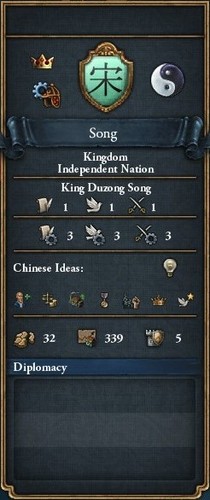
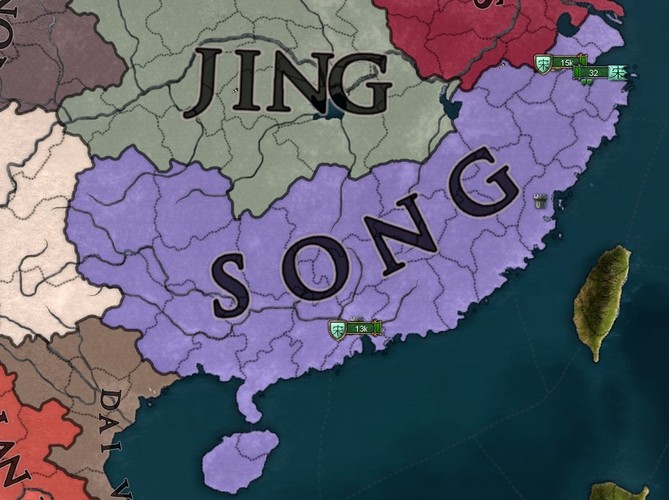
In the north, the Mongols didn’t far much better. At it’s apex, they had ruled over all of the Eastern Steppe and North China as the Yuan dynasty, but the outbreak of a mass revolt now known as the Red Turban Rebellion changed all of that.
Beginning as a militant religious movement, members of an organisation known as the White Lotus Society were the first to truly oppose the rule of the Mongols, harassing and assassinating Yuan officials wherever they could. After a violent crackdown on the Society, this minor revolt rapidly escalated into a major uprising, with thousands upon thousands of peasants flocking to join the Red Turban Army.
The next few years would be bloody, characterised by violent clashes and mass killings on both sides. Eventually, a string of victories by the influential general Zhu Yuanzhang finally broke the Mongol Army, leaving them with control of nothing but the Steppe and a sliver of North China.
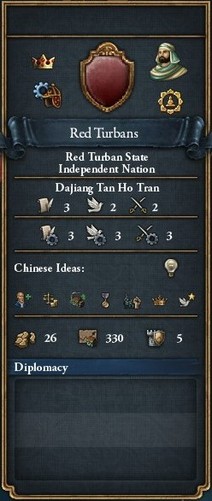
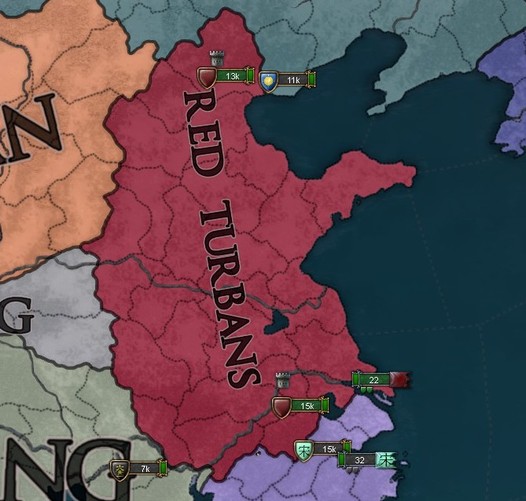
For a very brief period, the Red Turbans had all of North China under their firm rule, but this ended with the assassination of Zhu Yuanzhang. The culprits were never caught, but many suspected that it had been high-ranking members of the White Lotus who ordered the killing, jealous of the influence and fearing the ambition that Zhu possessed. This in turn led to a civil war breaking out within the ranks of the Society, but the true power lay with those who controlled the Red Turban Army, and that was the generals.
Eager to take advantage of the disunity, a few powerful figures raised their own armies and declared themselves Emperors, opposing both the Red Turbans and the Yuan.
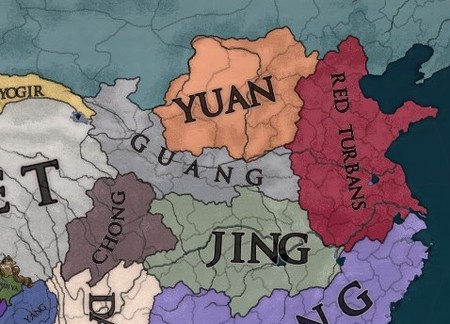
All of these assassinations, battles, rebellions and civil wars were overshadowed by something much bigger, however. In the barren wasteland of the far north, along the banks of the icy Lake Bajkal, a new figure was quickly gaining prominence…
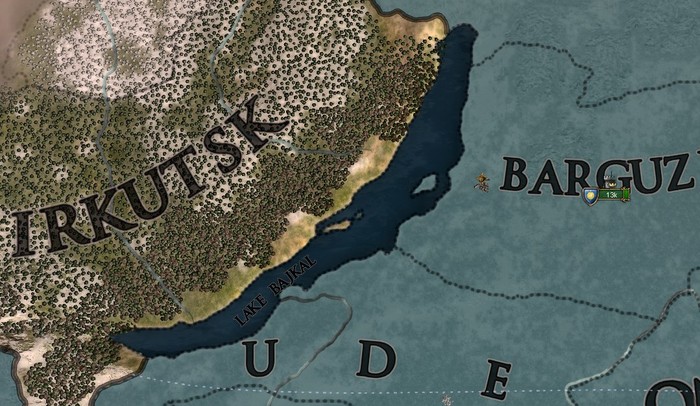
Surrounding himself with close friends and loyal countrymen, a young Buryati tribesman by the name of Uskhal launched a rebellion against the repressive Yuan whilst they were tied down in the south. It was initially treated as nothing but a minor uprising, but Uskhal innovated and implemented groundbreaking new battle tactics, quickly proving himself to be a genius strategist and unmatched tactician.
After a period of just six years, Uskhal somehow managed to defeat and incorporate all of his surrounding clans, annihilate dozens of numerically-superior Mongol armies on the battlefield, assault and capture dozens of fortress all across the Yuan Khanate, and push the frontiers of his empire from Lake Bajkal to Karakorum. All before the age of 25.
But he wasn’t done yet. The young conqueror promised no rest and no respite, vowing to utterly destroy the Yuan, to push into China proper with his horde at his back, and to unite all peoples of the earth under a single banner.
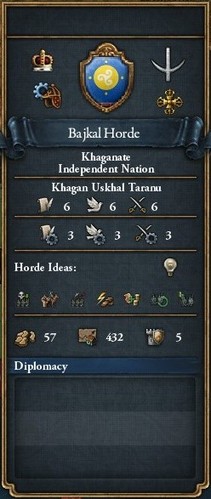
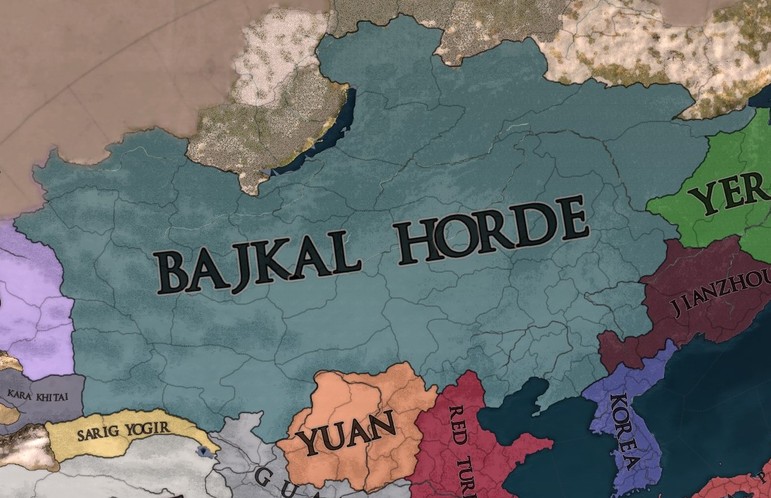
Bajkal Horde will get a decision to found a new dynasty, if they manage to defeat the Yuan and the Red Turbans. They also start with an extra mil tech.
The Song will start in deep decline, but with the possibility of halting it through reformation.
The Red Turbans start under the control of the Red Turban Army, and will have missions to aggressively expand.
---
Part 2 – Japan
Whilst China was burning in the west, the Land of the Rising Sun was about to enter a period of unprecedented prosperity and rapid expansion.
That doesn’t mean it didn’t have its fair share of civil war, however, the past few centuries had been just as ruinous for Japan as they had been in the west. The chaos was sparked by a proclamation issued by the Emperor Go-Daigo, whereby he declared his intention to restore the Imperial House to power, publicly defying the Kamakura Shogun by naming his own heir.
From that moment on, Japan was cleft in two, divided between those who supported the Emperor and those who favoured the Shogun. Go-Daigo himself would die shortly after his proclamation in a freak accident, but the son took up his father’s fight, attracting many samurai to his side by promising them land and riches.
The Kenmu Restoration would take decades to reach its conclusion, years in which the Emperor slowly managed to gain the upper hand, inflicting several defeats onto Shogunate forces. Even after capturing and executing the Kamakura Shogun, countless other powerful samurai defected and rebelled, attempting to create their own Shogunate.
Each of these rebels and pretenders was gradually cornered and defeated, however, and by 1444, Japan is once more united under the Imperial House.
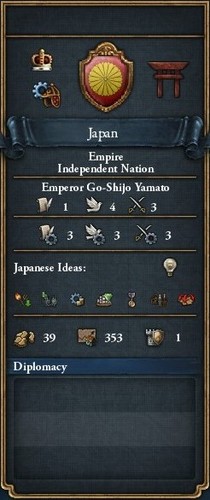
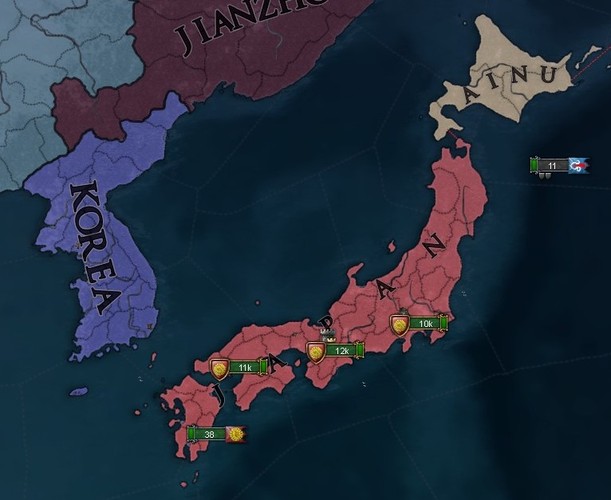
Japan is still caught between two eras, however, and tensions between the daimyos threaten to plunge the realm into an era of renewed civil war. Hoping to avoid internal conflict and unite his subjects, the Emperor begins to look to foreign shores, where chaos reigns on the mainland and countless opportunities are abound.
Japan will have missions to conquer the entire Korean peninsula, and possibly push into China and Manchuria.
---
Part 3 - Indonesia
The realms of Indonesia are famed throughout East Asia and the Near East, mostly due to the immeasurable wealth of its island chains, but also because of its constantly-shifting cultural and religious landscape.

For the vast majority of the Middle Ages, the East Indies were divided between several large maritime empires, each of which were ruled by either a Hindu or Sunni elite class. The rise of Hindu states in India, however, led to a large influx of Jainist and Buddhist refugees pouring into Indonesia, fleeing persecution and oppression on their homes subcontinent. Many of these refugees were well-educated, however, and they quickly became invaluable to the governance of the local kingdoms.
With time, the vast majority of the elite gradually converted to these religions, closely followed by the locals. By 1444, with the exception of one or two Sunni city-states, the East Indies have by and large come to be dominated by Jainist and Buddhist thalassocracies.
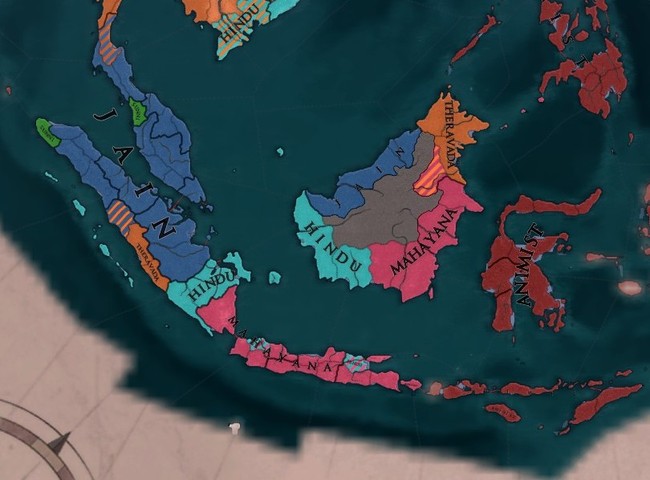
Indonesian states start with an extra admin tech.
---
Part 4 - West Africa
As far as Andalusi scholars are concerned, West Africa spent the Middle Ages embroiled in holy war, with thousands of Muslim and Pagan faithful clashing in large battles and sacking monumental cities.
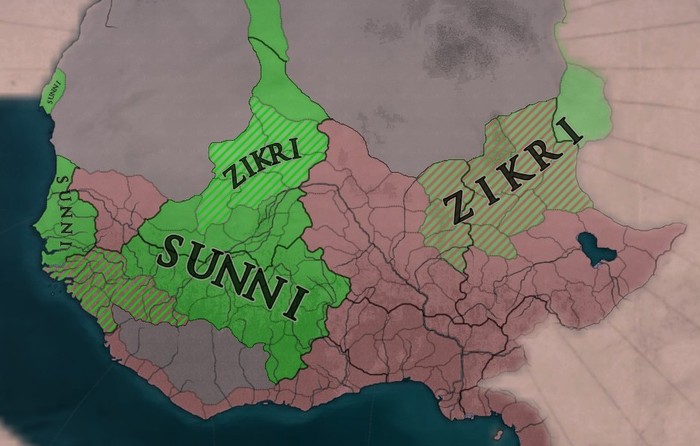
That much is true, but West Africa is far larger than the Andalusi believe, much bigger than just Ghana and Songhai.
The Malian Empire, the Sultanate of Jolof, the Kingdom of Kanem Bornu and the Benin Confederation have strived to avoid conflict altogether, with the destructive Ghana-Songhai Wars serving as a warning. Instead, these neighbouring states spent the Middle Ages united in alliance and peace, focusing on internal development and technological innovation.
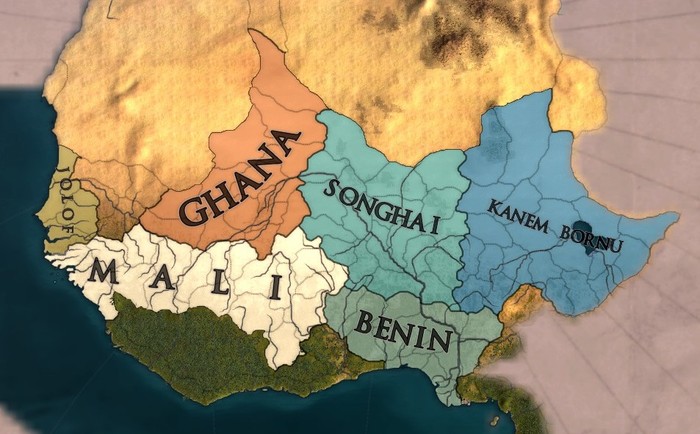
And without a doubt, it has paid off. The revolutionary breakthrough came in the early 1300s, when Mansa Aboubakri of Mali launched a sea voyage to the west, a venture that many considered to be downright suicidal. He would lose his way and slowly starve to death, the viziers warned. He would be struck down by Allah for his pride, the imams prophesied. He would stray too far and fall off the edge of the world, the peasants whispered.
To the surprise of all, however, Aboubakri returned to his shores almost a year later, alive and well. And not just that, but he began spouting tales of a vast continent in the Far West, waiting to be explored and exploited.
Still, many doubted, discarding these claims as nothing but the rantings of a madman. Mansa Aboubakri wasted no time in outfitting another expedition, however, to better chart the sea routes to this new continent. The next few decades were spent building sturdier ships and advancing naval technology, and by the mid-1400s, a small settlement was founded on this new continent.
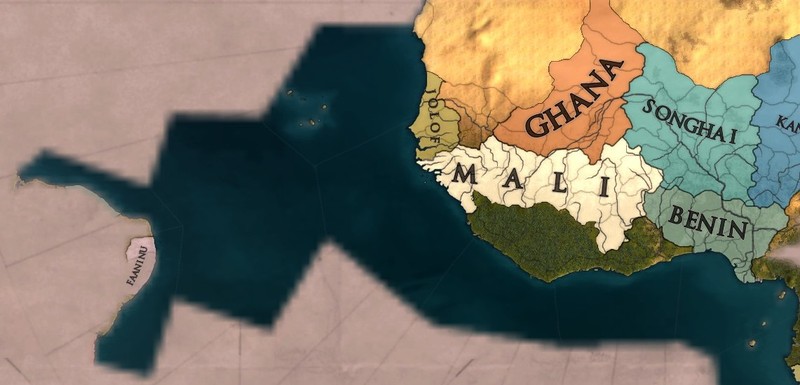
With the exception of Ghana and Songhai, West African states will be in a mega-alliance. They'll start off with knowledge of the route to South America, an extra dip tech, and they'll have a much higher chance of picking exploration ideas. A small Malian settlement also starts off in the New World.
---
Part 5 - America
Polynesian expansion is a feat unmatched in world history, one stretched out over thousands of years, one spanning countless generations, one ranging across thousands of miles of open ocean. Using their unique knowledge of the stars, wave formations and prevailing wind patterns, Polynesians would come to dominate chains stretching from Madagascar to Easter Island by the 1400s, and many of these settlements would continue to trade with one another for years after their founding.
It doesn’t end there, however. At the eastern edges of Polynesian expansion, as the Hawaiian Islands grew increasingly dense and crowded, it’s people continued their time-honoured tradition of launching expeditions to the west, with large bands of trained sailors and navigators sailing along oceanic countercurrents in double-hulled canoes. Eventually, after weeks at sea and morale gradually sapping away, one of these canoes hit land. A few scouting missions quickly made it clear that this landmass was far larger than their own, and the Hawaiians quickly hastened to return to their islands.
As tradition dictated, the next few years consisted of migrations towards this new land, and a new settlement gradually began to take root. Whilst thousands made their way across open ocean, however, the Polynesians also began launching exploration missions inland and along the coast.
Inevitably, the settlers ran into natives, and tensions between the two peoples quickly became inflamed. Conflict erupted shortly thereafter, and after a few clashes the Polynesians came out on top, firmly establishing themselves in several villages along the coast. The next few years were spent establishing a powerful base from which to expand, and by 1444, their knowledge of surrounding territories has grown substantially.
With this, rumours of a great civilisation to the south are spreading, fueling countless possibilities and opportunities...
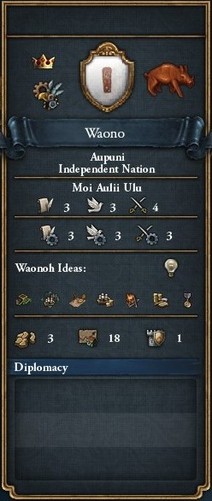

Waonoh, the Polynesian settlement, will have early events allowing them to colonise neighbouring land. They also start with the ability to raid coasts for slaves, and if they get a good ruler, they'll be able to carry out invasions into Nahua territory.